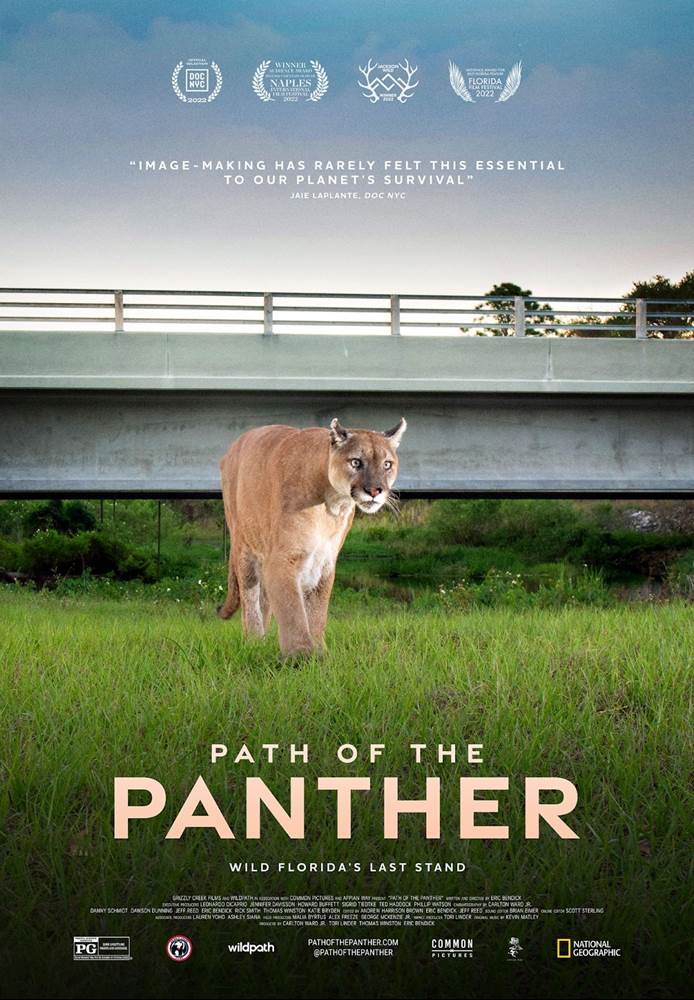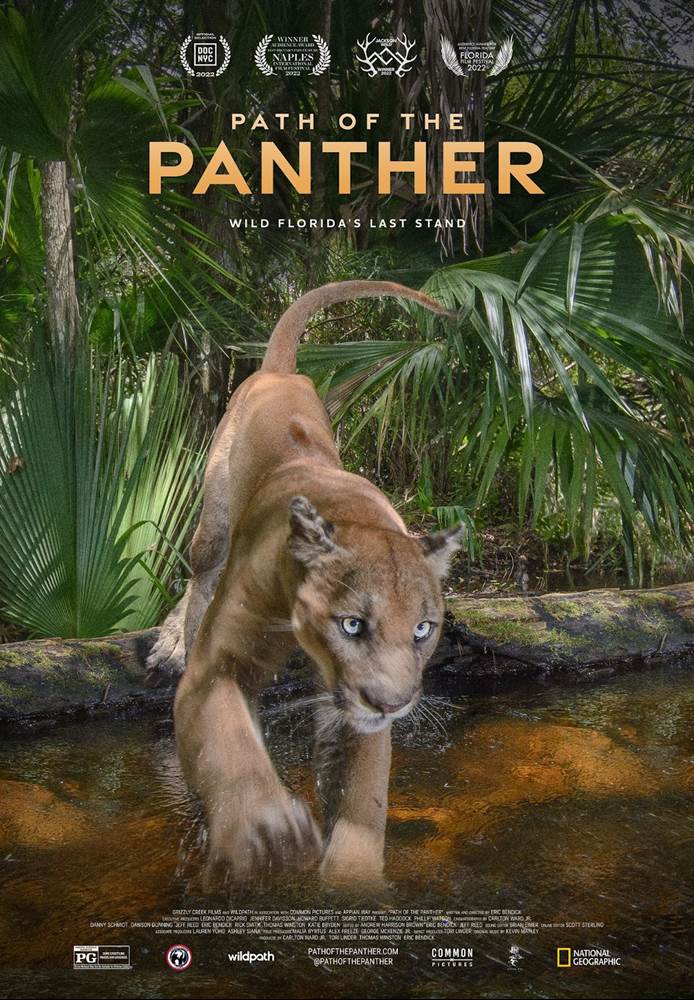Today, Wildpath and Grizzly Creek Films announced the statewide theatrical opening date and released the official trailer and key art for Path of the Panther. The documentary features world-renowned National Geographic Explorer and photographer Carlton Ward Jr. and is written and directed by Eric Bendick, who previously directed a series of films around the Florida Wildlife Corridor expeditions, including The Forgotten Coast, Chasing Ghosts and The Last Green Thread.
- Tom Winston of Grizzly Creek Films produced alongside Carlton Ward Jr. and Tori Linder of Wildpath.
- Award-winning actor and activist Leonardo DiCaprio serves as executive producer with Jennifer Davisson and Phillip Watson of Appian Way Productions in addition to Ted Haddock of Common Pictures, Howard G. Buffet and Sigrid Tiedtke.
- The award-winning film will be released in over 40 theaters in Florida — including major cities Jacksonville, Miami, Orlando and Tampa — on Feb. 24.
- Path of the Panther will air on National Geographic and stream on Disney+ this spring.
- In the lead-up to its theatrical release, the film has garnered top awards from sold-out screenings at festivals across the nation and the world, including the Jackson Wild Ecosystem Award, Mill Valley Film Festival’s Active Cinema Audience Award, Wildscreen’s Impact and Production Team Awards, and the New York WILD Best Conservation Film Award.
- The film has also been recognized in its home state of Florida by picking up the coveted Audience Awards at the Florida Film Festival and Naples International Film Festival.
- It was awarded the Golden Conch for Best Florida Feature out of the Key West Film Festival.
- Drawn in by the haunting specter of the Florida panther, National Geographic Explorer and photographer Carlton Ward Jr. and a coalition of biologists, ranchers, conservationists and Indigenous peoples find themselves on the front lines of an accelerating battle between forces of renewal and destruction that have pushed the Everglades to the brink of ecological collapse.
- This odyssey of heartbreak and hope is the culmination of more than five years of field research, 500,000 still images, and over 800 hours of ultra-high definition camera trap footage.
- Against all odds, wild panthers have been stunningly captured in their native ecosystem, as they’ve never been filmed before.
- The film is the cornerstone of the “Path of the Panther” project, supported by the National Geographic Society and many other partners that inspired the passage of the Florida Wildlife Corridor Act — the first legislation of its kind and a blueprint for addressing habitat fragmentation and species extinction across the globe.
- The project continues to grow today, and the world stands at a crossroads with the Florida panther guiding the way.
- Check out the trailer for the film below:
- Reaching near extinction in the 1950s, the Florida panther was among the first to be added to the U.S. endangered species list in 1973.
- The population has since rebounded from fewer than 30 adults to nearly 200 today. But the species faces an alarming number of new challenges. Its survival now depends on the protection of a network of statewide public and private lands known as the Florida Wildlife Corridor.
What they’re saying:
- Director Eric Bendick: “This is a film that Floridians absolutely need to see on the big screen. From the never-before-seen footage of elusive panthers in the wild to the real-life heroes who are risking it all to save the species and the land they need to survive, audiences will experience action that literally jumps off the screen and moments that fill us with hope, determination and sheer awe for the beauty of wild Florida.”
- Producer Tori Linder: “Path of the Panther is a testament to how Florida’s state animal is leading the way for unprecedented conservation goals and achievements across the greater United States and beyond. The production was filmed throughout the state of Florida and required the field team to manage as many as 30 photo and video camera traps over more than five years. This collaborative effort united a team of biologists, landowners and tribal members to bring the story to life. The film could not have been created without the support of the entire crew, cast, donors and local communities who find common ground with the panther’s story.”


